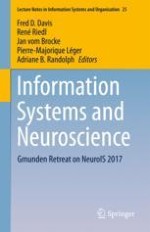2018 | OriginalPaper | Chapter
The Psychophysiology of Flow: A Systematic Review of Peripheral Nervous System Features
Authors : Michael T. Knierim, Raphael Rissler, Verena Dorner, Alexander Maedche, Christof Weinhardt
Published in: Information Systems and Neuroscience
Publisher: Springer International Publishing
Activate our intelligent search to find suitable subject content or patents.
Select sections of text to find matching patents with Artificial Intelligence. powered by
Select sections of text to find additional relevant content using AI-assisted search. powered by
